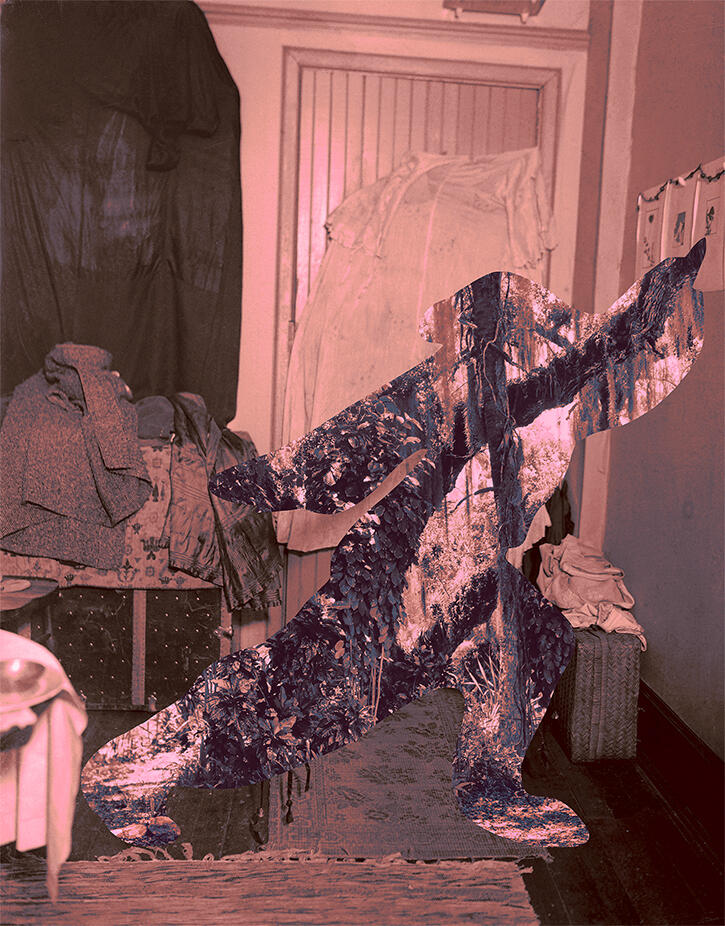‘The Baroness Is Not a Futurist. She Is the Future’: Celebrating Elsa von Freytag-Loringhoven
To coincide with an exhibition at Mimosa House, London, Juliet Jacques asks how we respond to influential but marginalized historical figures
To coincide with an exhibition at Mimosa House, London, Juliet Jacques asks how we respond to influential but marginalized historical figures

In a time when it has become fashionable to revisit forgotten people from historical art scenes, a figure such as Elsa Baroness von Freytag-Loringhoven poses a complex question to curators, historians and contemporary artists. How to remember and respond to someone who was influential within an important movement, but was marginalized or treated solely as a muse and, for whatever reason, did not produce enough work for a retrospective?

Born Elsa Hildegard Plötz in Pomerania (now part of Poland) in 1874, she trained as an actress and vaudeville performer, becoming a Baroness when she married her third husband, Leopold von Freytag-Loringhoven, in New York in 1913. Their union was brief, but she assumed the persona of ‘The Baroness’ as she started to move in dada circles, making a short (and lost, if it ever existed) film with Man Ray and Marcel Duchamp, creating a handful of sculptures and costumes from found objects, and writing experimental poetry. She moved, penniless, to Berlin in 1923, where her mental health declined, and then to Paris in 1927. She died that December of gas suffocation, with the most substantial part of her output – her poetry – not collected into a volume until 2011, having been preserved by her editor and some-time lover, Djuna Barnes.

This poetry forms the cornerstone of ‘The Baroness’ at Mimosa House, London, an exhibition that brings together her distinctive handwritten manuscripts – re-created in part across the walls of the gallery – and a small selection of her surviving objects with new or recent works by a range of contemporary artists. Some respond directly to Freytag-Loringhoven’s output. Astrid Seme’s audio work Figures for Dashing (2019), for instance, pays homage to her frequent use of the em-dash in her poems by repeatedly asking listeners to ‘take a breath’, prompting us to think about the nature of performed poetry (a favourite medium of the Baroness) and what happens when we translate written punctuation into the spoken word. Seme has also painted dashes across the walls, connecting Freytag-Loringhoven’s work to the various responses – notably Linda Stupart’s Cathedral (2022), a large sculpture made from rescued wood, like the Baroness’s tiny 1918 piece of the same name, exhibited in a nearby vitrine.

Sadie Murdoch’s diptych, Pathway Where-To and Pass-Way into Where-To (2021), plays with the Baroness’s absence from cultural histories, re-creating images of her trying on self-made outfits in her New York apartment in 1915, but replacing Freytag-Loringhoven with a ghostly shadow, leaving viewers to contemplate the reason for her reputation fading. Sensibly, the curator Daria Khan gives short shrift to the rumour, refuted by art historian Dawn Adès and writer/publisher Alastair Brotchie in a series of letters to The Art Newspaper in 2020–21, that Freytag-Loringhoven provided the idea, or even the object, for Duchamp’s urinal, by projecting an image of Fountain (1917) onto a toilet door at Mimosa House, next to lines of her poetry: ‘When I was young – foolish – I loved Marcel Dushit’. The question of whether she inspired a male genius is not allowed to overshadow her work; instead, the focus remains on how she has influenced younger artists.

Such influence is hard to measure and, obviously, this show actively aims to increase it both by commissioning direct responses and by constellating existing works around the Baroness. In Euro(re)vision (2019), Libby Heaney performs as former UK Prime Minister Theresa May and former German Chancellor Angela Merkel, using AI trained on debates in English and German to create algorithmic performances that combine the gestures of pop singers with fragments of political rhetoric, mirroring some of Freytag-Loringhoven’s poetry, to produce better public speaking than the real politicians. Reba Maybury also takes an experimental approach to poetry, using fragments of text compiled from the abuse she received from right-wingers over her work as a political dominatrix. In A Good Individual (2019), Maybury’s submissive men recite love poems produced from the fragments of abuse. Their different body parts appear on five stacked video screens with their backs to the camera, turning the recital into a cut-up exercise in a way that would not have been possible in the Baroness’s lifetime.

Zuzanna Janin’s beautiful statuettes (all Femmage a Maria & Elsa, 2018–21) are prizes for an international award for women artists in Poland that she founded, named after the Baroness and Janin’s mother, the painter Maria Anto. The resin globes present a ‘collage-portrait’ of the two women, made from images of their artworks, and are placed amongst Elsa’s sculptures and jewellery. I found these the most moving of the contemporary works here, striking an intriguing balance between a literal tribute, a more conceptual response, and an inventive, loving way of continuing the Baroness’s legacy. It cannot fix the historical exclusion – nothing could, even if proof existed of her influence on Duchamp – but it uses that marginalization as a prompt to work towards preventing it from happening again. Hopefully, the people showcased here, many of them queer or from working-class backgrounds and amongst my favourite contemporary artists and poets, will not have to suffer a similar fate.
‘The Baroness’ is at Mimosa House, London, until 17 September 2022
The title quote is by Marcel Duchamp from Kenneth Rexroth, American Poetry in the Twentieth Century, 1971
Main image: Elsa Baroness von Freytag-Loringhoven, Enduring Ornament, c.1913. Courtesy: Mimosa House, London
























